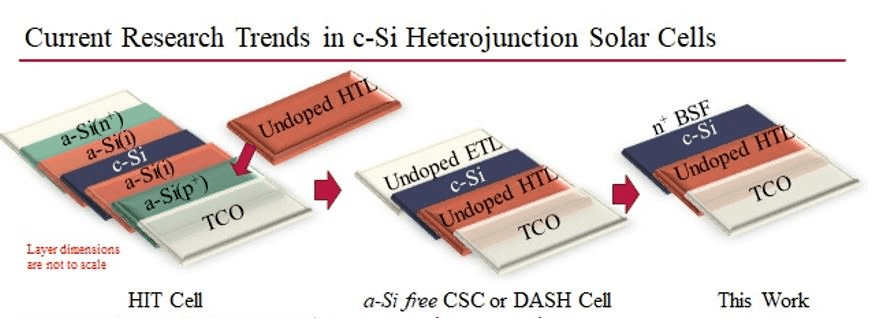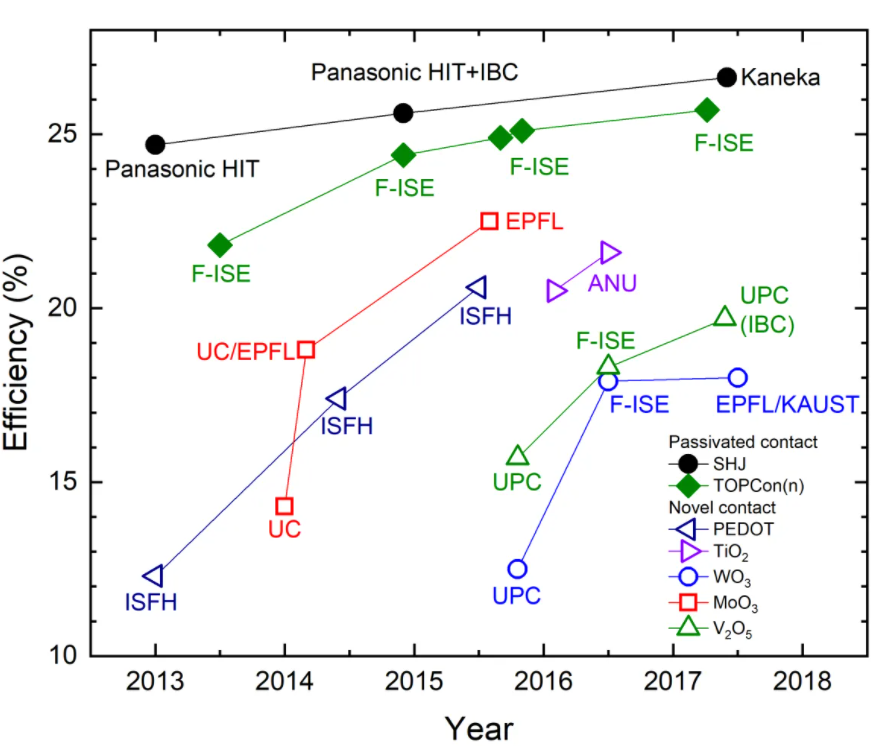


The second half of the last decade saw progressive research towards making Si solar cells with dopant- free carrier selective (CSC) architecture as a promising candidate for high-efficiency solar cells. These devices do not rely on P-N junction for charge separation; instead, they utilize a transition metal oxide such as molybdenum (MoOx), tungsten (WOx) or vanadium (V2Ox) for selectively separate electrons and holes, respectively, still with silicon as an absorber layer for incoming light. Heterojunction (HIT) solar cell with doped amorphous silicon is its closest approximation to a silicon CSC solar cell. CSC solar cells have already demonstrated a world record efficiency of 26.7% solar cell fabricated at Kaneka Corporation (Japan) in 2017.
Here, at NCPRE, we explore MoOx as a hole-selective and a passivating layer for Silicon surface offering a low-cost fabrication route compared to other HIT structures. In silicon, PV MoOx is often coupled with amorphous silicon (a-Si) which yields very high open-circuit voltage (Voc) exceeding 700 mV. In our past studies, we have observed that the passivation and selective property depend heavily on the thickness of the MoOx layer, which is one of our process optimization's primary objectives.



